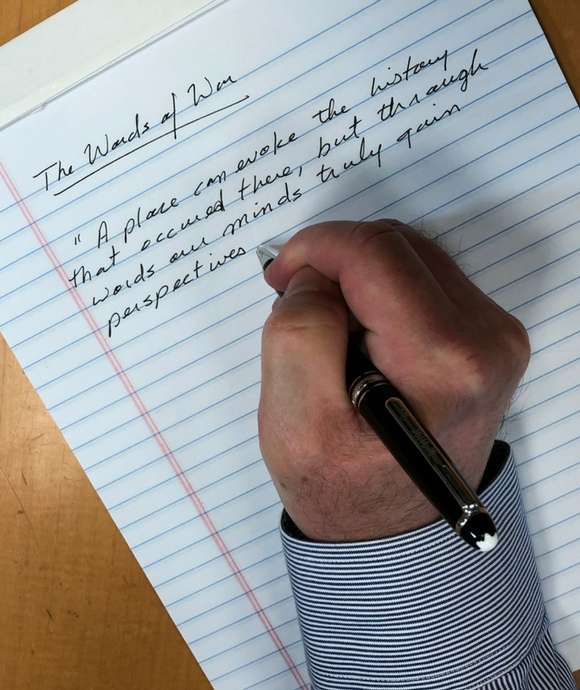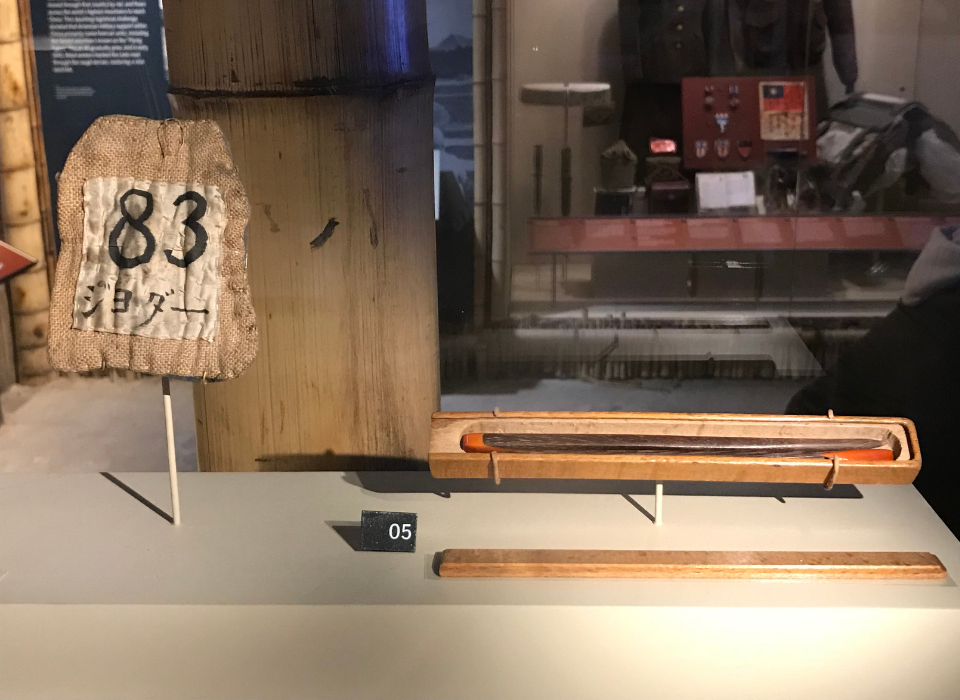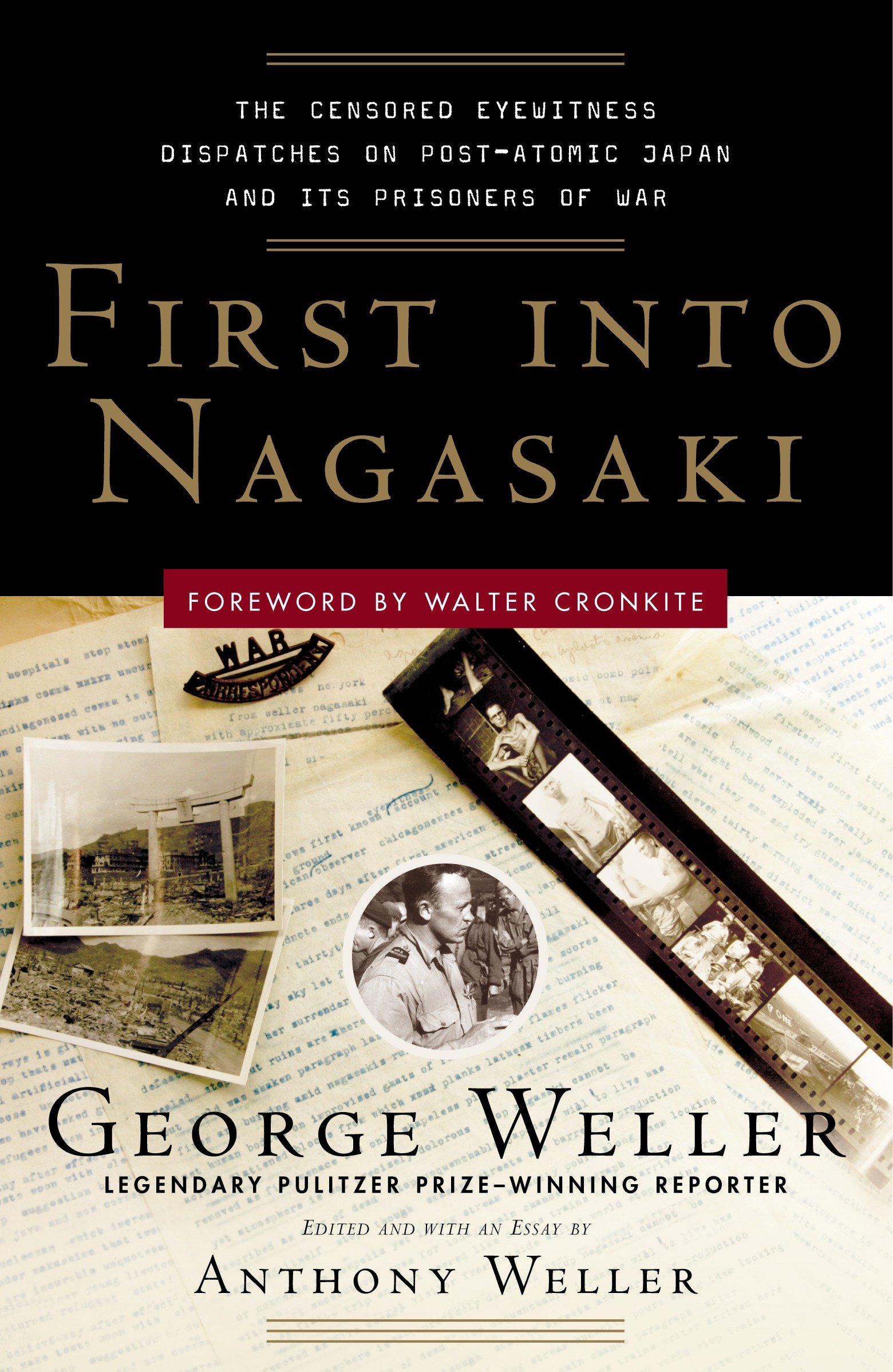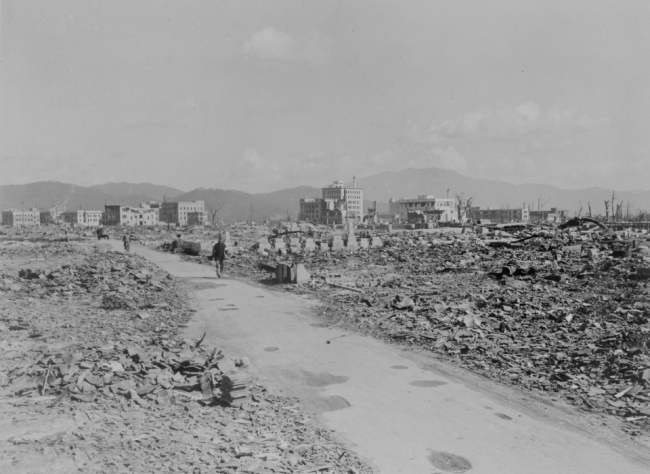Top Image: Badge and chopsticks from American POWs held by the Japanese in the China-Burna-India gallery at The National WWII Museum.
“Watching Americans die from a lack of medicine—while Japanese bayonets denied them the use of a warehouse full of needed supplies a hundred and fifty yards away—was only one experience of two doctors, veterans of the Bataan death march, who reached Nagasaki today.
“No pity for the Japanese digging themselves out from the ruins of the atomic bomb was expressed by dentist Lieutenant William Blucher of Albuquerque or Lieutenant Vetalis Anderson of Denver. The two physicians with the 200th Coast Artillery were cheerful, though worn by their more than three years of bitter captivity at infamous Camp O’Donnell and Cabanatuan in the Philippines and more recently at Camp #3 near Moji in northern Kyushu.
“How helpless they were to aid 8,000 Americans and 30,000 Filipinos dying respectively at a rate of twenty-five and three hundred daily was retold by the two young doctors. As Lieutenant Blucher recounted, ‘On the death march we saw men drink from cesspools with dead bodies in them. Any men who dropped out were shot or bayoneted. At O’Donnell we had hundreds of cases of malaria. From a warehouse jammed with Red Cross supplies, the Nips issued us enough quinine for only twenty men. We became the arbiters of life and death. We simply had to decide who would be kept alive and who would be allowed to die. We used rags for dressings.’
“According to Lieutenant Anderson, ‘The Japanese always enjoyed keeping us without water, and forcing us to sit in the sun in order to get thirsty and dizzy quicker. I saw with my own eyes a Filipino bayoneted for trying to offer us water. When the Filipinos saw they’d be killed for this, they set five-gallon tins of water along our marching route. The Jap commander sent ahead a special detail of men to knock the tins over. I saw a Jap kick in the stomach a pregnant Filipino woman who tried to give us riceballs. She fell, and I went past with her lying there. The Filipinos were magnificent all the way through. At O’Donnell they sent us three trucks full of food and medicine. The Japs turned them back at the camp gate, though men were dying so fast we could not bury them. Later, when the Japs allowed us to go into the jungle to gather guava leaves for tea, the Filipinos used to find our parties and sneak them little packets of medicine.”
George Weller, First Into Nagasaki, p. 40-41.
What makes this passage unforgettable is the unfathomable destruction wrought by high technology at the end of the war at Nagasaki contrasted against the daily brutality, inflicted with intentional cruelty by physical human means, at the war’s beginning. Journalist George Weller documents his interaction with the two young doctors as occurring at 0020 hours (twenty minutes after midnight) on September 9, 1945—just three days after Weller became the first American journalist to enter Nagasaki a month after the atomic bombing of the city, and the very day that the Sino-Japanese war was concluded.
Japanese military aggression had begun first in Manchuria in 1931, and then metastasized into constant war after the Marco Polo bridge incident outside Beijing in 1937. It was Japan’s inability to subdue China that led the Japanese military leadership to expand the war by attacking the United States at Pearl Harbor and in the Philippines in December 1941. It is historically fitting that on the day that the Japanese ended their war with China, American survivors of the Bataan death march found themselves entering Nagasaki, where George Weller encountered them.
The testimony of Lieutenants William Blucher and Vitalis Anderson is so striking because the horrors they describe come from elemental sources. The inhumanity of the Japanese intentionally depriving prisoners of water, to the point of tipping over buckets of fresh water and following up with fists and bayonets as men succumbed to the inevitable effects, is shocking because nothing outside a cultivated cruelty of the human spirit is required. The fact that Blucher and Anderson are by profession medical doctors, dedicated to healing and the preservation of life, underscores the Japanese cruelty even more. As they are denied the medicine and food that could keep many survivors alive in the camp, they are placed in the position of playing God with their fellow POWs' lives. What goes unsaid in Weller’s account is the weight of the decisions that Blucher and Anderson had to have made upon their consciences. A reader can easily imagine their mental agony at having to choose which fellow prisoners to aid throughout the war, and wonder if they might always regretfully recall the faces of those they were unable to save, now that the war is over.
Besides Japanese cruelty, however, the courage and kindness of the Filipino people who attempted to aid the American POWs even at the risk of their own lives stands out as elemental human character. The hatred that characterized the Pacific war between both the Japanese and Americans might be symbolized by the Bataan death march and Nagasaki in the passage, but the Japanese cruelties and violence against the Filipinos exposes the true nature and historical reality of Imperial Japan.
Finally, one other elemental consideration which leaps to the attention of modern readers is the use of derogatory slang terms that are considered racially insulting in modern conversation. When readers grasp the realities of actual barbarism and persecution in this passage, it highlights the luxury we enjoy today to live in a world in which words are the focal point within our reality. I think that readers can discover much of their own elemental nature, depending upon what they find to be the most striking parts of the passage.

“A place can evoke the history that occurred there, but through words our minds truly gain perspectives and understanding of what it was like to know, feel, experience, hope, fail, triumph, and live through events from which we ourselves were absent. The written word is our most intricate map to retrace and reconstruct what we think happened, and ultimately brings us back to ourselves.”
– Keith Huxen, PhD , Senior Director of Research and History, The National WWII Museum
Keith Huxen
Keith is the former Senior Director of Research and History in the Institute for the Study of War and Democracy at The National WWII Museum.
Cite this article:
MLA Citation:
APA Citation:
Chicago Style Citation:









![Max Fuchs, New York City cantor, sings as Rabbi Sydney [sic] Lefkowitz, Richmond, VA, conducts the first Jewish services from Germany.](/sites/default/files/styles/max_650x650/public/2025-10/image1.jpg)

